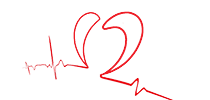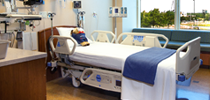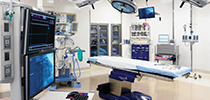Read about the advanced therapies performed for heart rhythm disorders at Oklahoma Heart Hospital and stay connected with the Heart Rhythm Institute.
Heart Rhythm Institute Blog
Posted on January 15th, 2018
Atrial fibrillation (or AFib) alone is not a life threatening condition, but it can lead to an increased risk of stroke and an increased risk of heart failure. Heart failure occurs when the heart doesn’t pump enough blood to meet the body’s needs.
In AFib, the heart doesn’t beat properly, which means it also can’t fill up completely to pump blood to the body. When the heart doesn’t pump... Read More
Posted on January 2nd, 2018
Orthostatic hypotension is a form of low blood pressure than happens when standing up from either a sitting or a lying position. It can make you feel dizzy or lightheaded, and it may even make you faint.
The condition can be mild and last for only a few minutes, but some cases of orthostatic hypotension may last longer and could be a symptom of a more serious illness. If you frequently feel... Read More
Posted on December 15th, 2017
There are four valves in the heart: the tricuspid, pulmonary, mitral, and aortic valves. As blood exits each of the four chambers of the heart, the valves open to allow blood through and then close to prevent blood from flowing backward.
When one or more of the valves do not function properly, one of several types of heart valve disease can occur:
Regurgitation occurs if the valve... Read More
Posted on December 1st, 2017
A recent study published in The Lancet medical journal resulted in news headlines that stents may not be effective for treating patients with chest pain. But as with any medical study, it’s important to examine the size of the study, the way that it was conducted, and the statistical significance of the data before changing any guidelines about patient treatment.
Stents are small wire devices... Read More
Posted on November 15th, 2017
Tachycardia is the general term to describe a common heart rhythm issue where the heart beats too quickly. For diagnostic purposes, it’s typically defined as an elevated heart rate of 100 beats per minute or more at rest in adults. Resting heart rates vary by person, but a resting heart rate between 50 and 100 beats per minute is considered normal for most adults.
There are three basic types of... Read More
Posted on November 2nd, 2017
Blood pressure and heart rate are two different measurements. While they are frequently measured at the same time in the doctor’s office, they are distinctly different factors in heart health.
Blood pressure is the force exerted against the artery walls when blood pumps through the body, usually measured with two numbers. The top number (systolic pressure) measures the pressure as the heart beats... Read More
Posted on October 23rd, 2017
The vagus nerve is the longest of 12 cranial nerves and extends from the brainstem through the chest to the abdomen on each side of the body. It functions as part of the involuntary nervous system that controls unconscious processes in the body, such as regulating heart rhythm, regulating breathing, and digesting food.
Vasovagal syncope is one of the most common causes of fainting, which... Read More
Posted on October 10th, 2017
Heart block is an abnormal heart rhythm where the heart beats too slowly, which results in the electrical signals being partially or totally blocked between the upper chambers (atria) and lower chambers (ventricles). Heart block is also called atrioventricular (AV) block.
Each heartbeat originates in the upper right chamber (atrium) of the heart in the sinus node, a bundle of specialized... Read More
Posted on September 16th, 2017
The pericardium consists of two thin layers of tissue surrounding the heart that help hold the heart in place and help it function. There is a small amount of fluid between the two layers of tissue to prevent friction.
Pericarditis is inflammation of the pericardium, which can be either acute or chronic. The most common symptom for acute pericarditis is sharp, stabbing pain in the chest,... Read More
Posted on September 11th, 2017
Cardiac implantable electronic devices (CIEDs) such as pacemakers and defibrillators can be life-saving devices for many patients with irregular heart rhythms. But as with any device or implant, there is also a small risk of complications associated with the device. The most common issues are infection or mechanical failure of the device or the leads that attach to the heart.
The risk of... Read More














